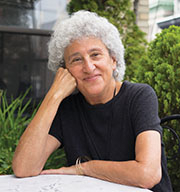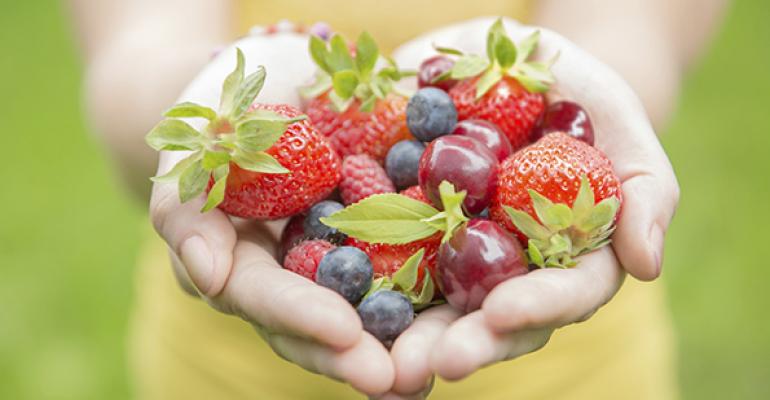Americans’ definitions of health and wellness have evolved. Consumers have shown an increasing interest in eating food with “clean” labels, and a number of large restaurant chains have responded with plans to remove artificial colors, flavors and other items.
Nation’s Restaurant News asked two eminent nutritionists, Marion Nestle of New York University, Food Studies and Public Health, and Walter Willett of the Harvard School of Public Health, to weigh in on whether efforts to remove "unnatural" ingredients really matter.

 Papa John’s has now joined Panera and Chipotle in committing to purge its menu of ingredients deemed artificial by consumers. In doing so, it joins packaged food companies such as Nestlé USA (to which I am, alas, not related) and Kellogg in switching away from artificial flavors or colors such as Red #40 or Yellow #5.
Papa John’s has now joined Panera and Chipotle in committing to purge its menu of ingredients deemed artificial by consumers. In doing so, it joins packaged food companies such as Nestlé USA (to which I am, alas, not related) and Kellogg in switching away from artificial flavors or colors such as Red #40 or Yellow #5.
More surveys are finding the public to be more worried about artificial flavors and colors — and GMOs — than sugars, and voting with their dollars against products containing them.
Where does science come into this decision? Consumer advocates have complained for decades about the potential health risks of these chemicals, especially the dyes. In studies using rats and mice, high doses of food dyes have been linked to such problems as birth defects, cancer, organ damage and allergic reactions. Some — but definitely not all — studies in humans show a linkage between food dyes and hyperactivity and other behavioral problems in young children. But the reliability of these studies and what they mean for human health remain matters of vigorous debate.
The makers and users of color and flavor additives insist that they are safe at current levels of usage. So does the Food and Drug Administration. But in the absence of convincing evidence of their safety, the Center for Science in the Public Interest continues to campaign for their removal from the food supply, as it has since the 1970s, and to petition the FDA to remove their GRAS [Generally Recognized as Safe] status.
I question why artificial additives have to be in foods at all. I understand that food manufacturers need them to disguise the lack of color and off flavors in processed foods, but their purpose is mainly cosmetic. Large segments of the American public want foods to be as natural and unprocessed as possible — and restaurants and food companies to be transparent about what they are selling. As for GMOs, just label them please. Doing so will solve a lot of problems.
None of this is about the science. It’s very much about value systems related to food.
Restaurants have a choice: Appeal to customers who care about these issues, or risk losing them.
Marion Nestle is the Paulette Goddard Professor of Nutrition and Food Studies at the New York University Department of Nutrition, Food Studies and Public Health.

 Removing artificial ingredients from restaurant offerings is probably good in general, but at this time will probably have minimal effects on public health. In fact, some ingredients considered natural are far more problematic.
Removing artificial ingredients from restaurant offerings is probably good in general, but at this time will probably have minimal effects on public health. In fact, some ingredients considered natural are far more problematic.
Most artificial ingredients have no health benefit, and possibly could do some harm, even if proof of that harm has not yet been documented. Furthermore, many of them, such as artificial colors, are used to lure people, especially kids, into eating junk food, so there might be some indirect benefits of removing them. One exception might be artificial sweeteners, which do not have the same adverse effects on health as sugar, so replacing them with natural sugar could be a change for the worse.
The removal of one artificial ingredient from our diet was very beneficial to public health — trans fats. Trans fats are directly related to higher risks of heart disease, diabetes, overweight and other adverse outcomes. Replacing them with healthy fats has been a huge step forward. But this has already largely been accomplished.
Although removing many artificial ingredients might have some modest benefit for public health, the far larger issues are related to aspects of diets that are considered natural. Reducing consumption of products considered natural, including refined starch, salt and red meat — particularly processed meat — would have enormous health benefits. Increasing fruits, vegetables, whole grains and nuts would have major benefits, too.
Unless we also deal with these “macro” issues, focusing on artificial ingredients could be a distraction.
The best actions restaurants could take to make their food more healthful would be to reduce red meat by decreasing their serving sizes and offering great alternatives, and decreasing consumption of sugar-sweetened beverages by promoting alternative beverages, especially water. Reducing sodium is another important step restaurants could take, since most consumers are unaware of the high levels of sodium in much of restaurant food.
Walter Willett is chair of the Harvard School of Public Health’s Department of Nutrition.

